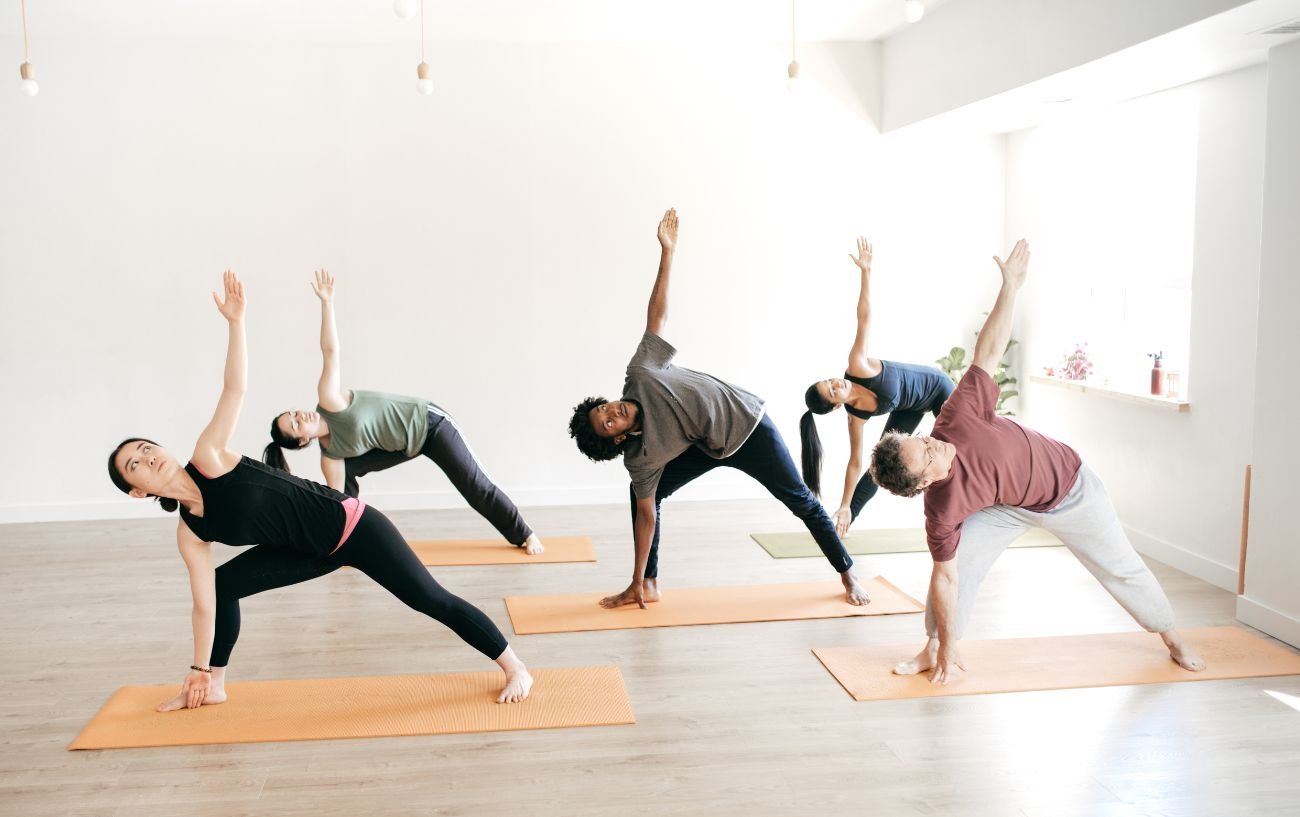Sivananda Yoga is a style of yoga that was founded by Swami Vishnudevananda. It is a system of yoga postures or asanas and relaxation techniques that is encapsulated in a 90-minute class.
Vishnudevananda named the school and system of yoga after his guru Swami Sivananda. The teachings of Sivananda have been incredibly influential to other teachers and styles of modern yoga.
In this article, we’ll take a look at:
The Sivananda method: principles, asanas, benefits
Swami Sivananda
Swami Vishnudevananda & Abuse Allegations

What Is Sivananda Yoga?
There are many types and styles of yoga, which range from Restorative to Rocket Yoga. Sivananda combines elements of Vinyasa Flow with Hatha Yoga to create a balanced approach to yoga.
Sivananda Yoga features a substantial amount of sun salutations which require you to take a breath with each movement. They generally feature in the warm-up section of the practice.
Download our Free Yoga Nidra Script
We’ll send you this script, and you’ll get thoughtful updates on the latest posts from yogajala.
SEND ME THE FREE NIDRA SCRIPT!I consent to receiving emails and personalized ads.
Sivananda Yoga is a fusion of movement and relaxation.
While the sun salutation element will get your heart rate up and your body moving, the more static postures, which are held for a longer period of time, encourage you to relax the body and the breath, making it a very balanced practice.
A long savasana and meditation are used to promote relaxation.
Sivananda practices combine yoga asana with pranayama, meditation, and relaxation as a way to gain control of the mind.

Sivananda Yoga is an approach to living well which includes a healthy approach to vegetarian eating as well as positive thinking. Mastery of the mind is key – this is a mind, body spirit practice.
The five key principles of Sivananda Yoga are said to reduce stress and improve energy, as well as focus the mind and create a sense of connection to the universe. These principles were honed by Swami Vishnudevananda. They are:
1. Asana
This entails the physical postures and movements that make up a class. An asana practice makes for a healthy body and can help calm the mind.
2. Pranayama
This is the use of breathing exercises. Prana means energy or life force, and learning to harness this energy can help not only with physical health but also with controlling the mind.
3. Relaxation
Optimized relaxation is important for mental and physical well-being. This is different from sitting in front of the tv and zoning out.
Practicing relaxation and reducing stimulation is a super important tool. Yoga is a great way to start learning how to relax – especially in more gentle forms.
4. Meditation
Meditation within Sivananda Yoga includes positive thinking which is said to improve mindset and energy levels.
Meditation is the focusing of the mind – often on a single object. There are many health benefits associated with this practice such as improved sleep and decreased anxiety.
5. Diet
Having a plant-based diet rich in healthy and nutritious foods is an important facet of Sivananda Yoga. Balance is key in this style of yoga, and what you eat is no exception.

